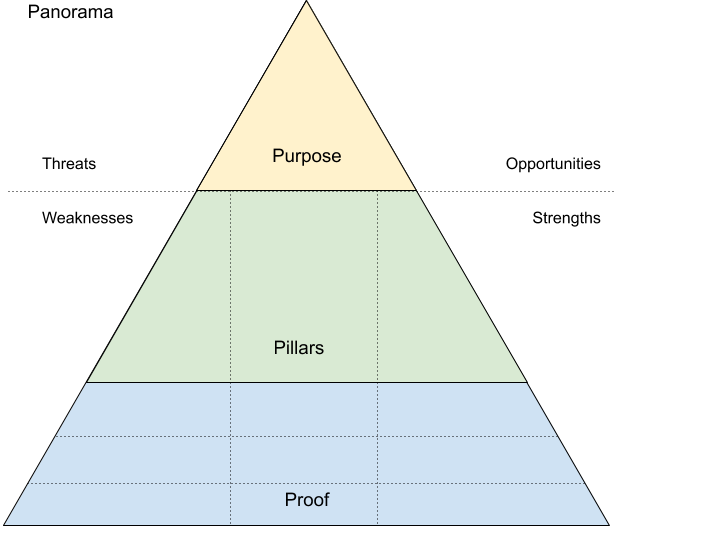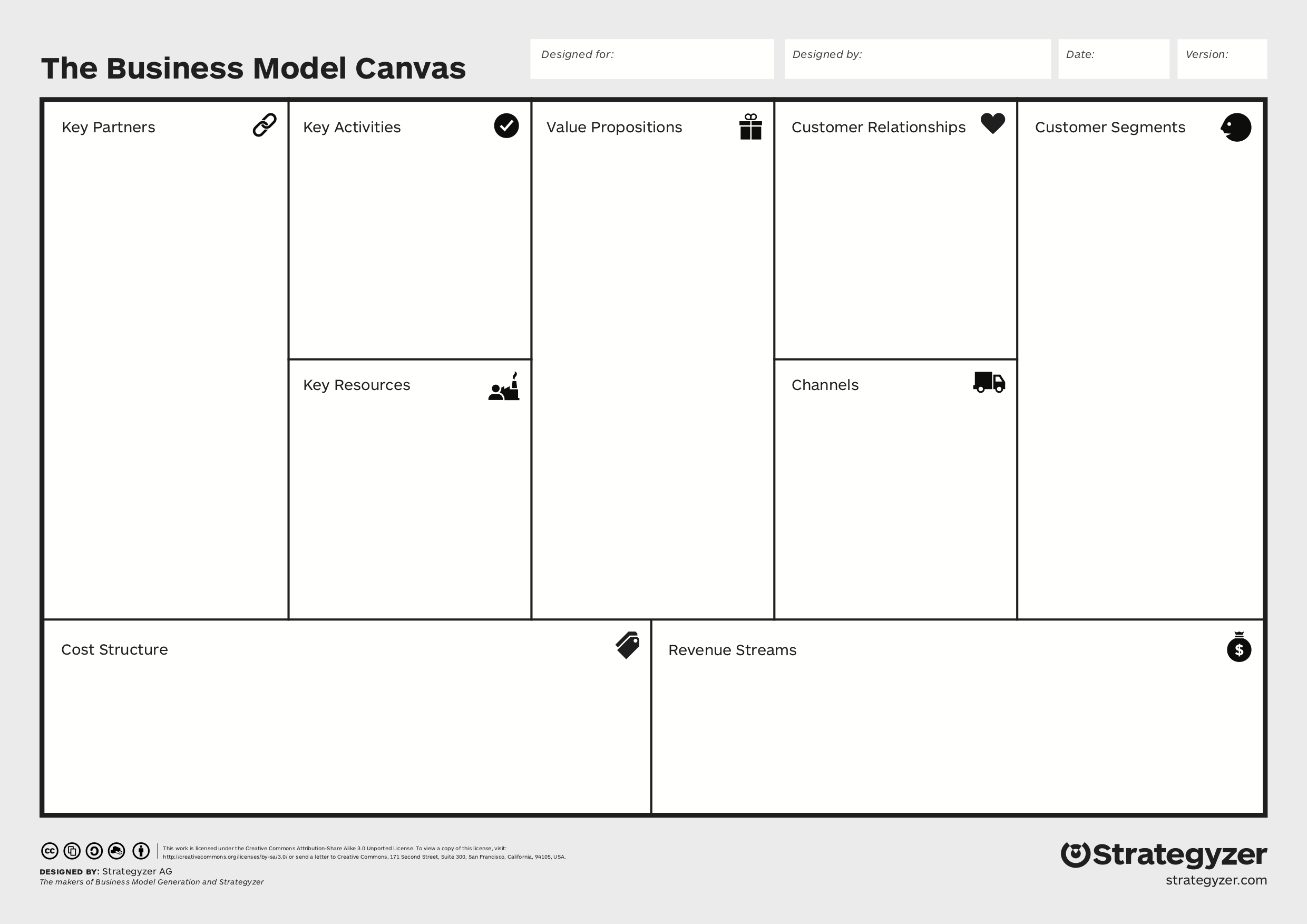Whither the Wind Blows
This week I’ve been reflecting back on some of the previous teams from OC and I thought one experience from the Impulse Drive team and a Strategy Lab might be particularly helpful.
Whither the Wind Blows Read More »
This week I’ve been reflecting back on some of the previous teams from OC and I thought one experience from the Impulse Drive team and a Strategy Lab might be particularly helpful.
Whither the Wind Blows Read More »
In this article we will look at five steps that every organization needs to take in planning for the future, and those steps need to be taken for three planning horizons.
Strategic Planning Through the Pandemic Read More »
 On Monday we began a week-long series on how to plan through this current pandemic. We identified four steps that every organization should be taking within the context of three planning horizons. Today we finish up the series by looking at the final step: Strategy Development.
On Monday we began a week-long series on how to plan through this current pandemic. We identified four steps that every organization should be taking within the context of three planning horizons. Today we finish up the series by looking at the final step: Strategy Development.
Undoubtedly you’ve been asked “what’s your strategy” for getting through this crisis. You’ve probably had an answer, but maybe one that you weren’t even sure of yourself. Hopefully this week’s articles have provided a stronger foundation. But to answer that question, we first need to identify what a strategy even looks like. My definition is a bit unorthodox, but I like to think of a strategy as a framework that makes hard decisions easier.
Over the years, I’ve adapted some existing tools into what I call the Purpose Pyramid:

The Situation Assessment that we talked about on Wednesday provides the Panorama within which we develop our strategy. That strategy starts with our Purpose – what we are trying to accomplish. Below the Purpose are three Pillars – what are the three things that absolutely need to be true for us to accomplish our Purpose. Under each Pillar are three Proofs – the three most important things we need to do for that Pillar to become true.
Normally I think of a strategy as a long term framework, but these aren’t normal times. Many organizations will experience more change between February and December of 2020 than they’ve experienced over the past five years. This is also a period of unprecedented uncertainty, so it is completely appropriate and worthwhile to develop a strategic framework for each of the four scenarios in each of the three planning periods.
For example, your Purpose for the “right now” may be “Survive this crisis, retaining the ability to serve our customers and love our employees.” The Pillars under that Purpose may be “Cut Operational Costs”, “Launch New Delivery Models”, and “Retain Key Employees”. The specific Proof actions taken under each Pillar may differ significantly under the different scenarios for the “right now.”
The Purpose Pyramid for the “new reality” would look more like a traditional long-term strategy. For example, for my business, the Purpose might be “Honor God by helping businesses develop sound strategies.” My three Pillars might be “Deliver Customized Advisory Services”, “Develop Tools To Accelerate Strategic Decision Making”, and “Tell Tales and Share Tools”. Again, the specific Proof points will likely differ significantly under different scenarios.
Proverbs 24:3-4 tell us that “By wisdom a house is built, and by understanding it is established; by knowledge the rooms are filled with all precious and pleasant riches.” Of course, the fear of the Lord is the beginning of true wisdom, but I hope that I’ve been able to provide a framework and some tools to help you as you seek the Lord’s guidance in building a business that will withstand this current storm and those storms that will undoubtedly come in the future. Let me know if there’s anything I can do to help you through this process.
Top Photo credit: Anastasia Petrova
Planning Through the Pandemic – Part 5 Read More »

On Monday we began a week-long series on how to plan through this current pandemic. We identified four steps that every organization should be taking within the context of three planning horizons. Today we are looking at Business Modeling. This is a big topic, so today’s article is longer than normal.
The Business Model Canvas was developed by Alex Osterwalder starting in 2005. It effectively summarizes an entire business into nine elements. The Business Model Canvas has become an essential element for entrepreneurs following the Lean Startup methodology.

When you look at the canvas, there’s an obvious break between the top section (business decisions) and the bottom section (the financial impact). Less obviously, the canvas can be broken in half left and right. At the center is the “Value Proposition” and this truly is the core of the business model. We like to call the right half, the “Front End” of the business model, and it represents the decisions made in order to bring that value proposition to market. The left half, or the “Back End” of the business model, represents all the decisions that enable the business to successfully deliver that value proposition to the target customers. Successful execution of the Front End results in the Revenue Streams. Successful execution of the Back End requires investment represented here by the Cost Structure.
While your business model has likely already been well established, it is important to understand how it might change, or where there may be stresses on the business model during each of the three planning horizons under different scenarios.
The most important elements to deeply understand first in building out a business model are the Value Propositions and the Customer Segments. Osterwalder and his team at Strategyzer have developed an additional tool for understanding these elements, which they call the Value Proposition Canvas.
On the right side of the Value Proposition Canvas is the Customer Profile which provides a structured approach to understanding the targeted customer segment and their thought process in purchasing a certain type of product or service. This profile is developed entirely from the customer’s perspective using their language and based on their values and perspectives. The Customer Profile begins with the Customer Jobs section which describes what customers are trying to get done in their work and/or non-work lives. The Gains section describes the specific benefits they hope to receive and the outcomes they hope to achieve through those Jobs. The Pains section captures the risks, obstacles, and bad outcomes that make it hard to achieve the Gains when doing the Jobs.
The left side (the Value Map) corresponds to the Customer Profile, but starts with the list of Products and Services being offered to help customers do their Jobs. The Pain Relievers section describes how the Products and Services (and how they are delivered) specifically work to reduce the Pains, and the Gain Creators section similarly describes how they specifically work to deliver the hoped for Gains for the customer.
For many businesses, customers’ Jobs, hoped for Gains, and anticipated Pains will vary significantly across the scenarios and different planning horizons. Similarly, what you and your partners can do, and how best to reach and serve customers are likely to change over the coming months and under different scenarios. Therefore, it’s important that you create versions of your business model for each of the twelve combinations of scenarios and planning periods. You need to understand what changes between scenarios so that you can be ready for whatever happens. It’s also important to think through what will change when you move from the “right now” to the “restart” and finally to the “new reality”.
Proverbs 19:2 warns us “Desire without knowledge is not good, and whoever makes haste with his feet misses his way.” Take time to understand your customers and your own operations through these transitions. Your employees and customers depend on it.
Top Photo Credit: JESHOOTS.COM
Planning Through the Pandemic – Part 4 Read More »

On Monday we began a week-long series on how to plan through this current pandemic. We identified four steps that every organization should be taking within the context of three planning horizons. Today we are looking at Situation Analysis.
Yesterday we talked about the scenario planning for three planning periods: “right now”, “restart” and “new reality”. Scenario planning will give you four different named scenarios for each period. The remaining planning steps will be performed for each of the scenarios. I know that sounds like a lot of work when you’re already overwhelmed — developing 12 different sets of plans — but there’s likely lots of overlap in plans across scenarios and deeply understanding the differences will be critical to being prepared in this time of very high uncertainty.
In Luke 14 Jesus warns us to understand our situation before charging forward, saying “For which of you, desiring to build a tower, does not first sit down and count the cost, whether he has enough to complete it?… Or what king, going out to encounter another king in war, will not sit down first and deliberate whether he is able with ten thousand to meet him who comes against him with twenty thousand?”
In business, Situation Analysis is traditionally captured as a SWOT – strengths, weaknesses, opportunities, and threats. I’ve found it helpful to start with the external environment — opportunities and threats. Two frameworks that can help think through these external factors are six segment analysis (demographic, sociocultural, political/legal, economic, technological, and global) and Porter’s five forces (buyers, suppliers, substitute products, new entrants, and competitors). For each of these eleven sectors or forces you will document the current situation, known trends, and uncertainties and then evaluate how those realities, trends, and uncertainties all translate into opportunities and threats for your business.
The internal environment (strengths and weaknesses) is evaluated within the context of the external environment and relative to current and future competitors. A tool I like to use in developing the internal environment is the Blue Ocean Strategy Canvas.
In their book Blue Ocean Strategy W. Chan Kim and Renée Mauborgne introduced the Strategy Canvas which plots performance of different competitors against key factors upon which the industry currently does or could compete. Creating a Strategy Canvas for your industry will make clear where your organization underperforms or outperforms competitors. Focus on those areas that matter the most to customers and where there’s a significant difference in performance.
The resulting Situation Analysis provides a critical perspective for continuing your planning. As I’ve said before, it’s important to do this 12 times – once for each of the four scenarios in each of the three planning periods.
Top Photo Credit: S O C I A L . C U T
Planning Through the Pandemic – Part 3 Read More »

Yesterday we began a week-long series on how to plan through this current pandemic. We identified four steps that every organization should be taking within the context of three planning horizons. Today we are looking at Scenario Planning.
But first we need to understand what is true about each of the three planning horizons.
The first timeframe is the “right now” – between today and when lockdowns start to ease and operations can start returning to “normal.” Planning for the “right now” is all about survival and will focus on critical scarcities. Most organizations have limited cash on hand and revenue sources have dried up, so planning will be focused on getting cash to last through the pandemic. For other organizations, demand may be outpacing supply (either raw materials, fixed infrastructure, or people for operations), and for these, planning will be focused on how to maximize output with minimal inputs.
The second timeframe is the “restart” – the transition period that starts when the lockdown ends. Employees and customers can return, but we can’t yet call this period “normal.” People will still be (rightly) wrestling with fears. Every business in the ecosystem will also be in transition. Partners and suppliers will need time to be fully supportive of our businesses. Business customers will take time for their demand to return to “normal.” Many that we do business with will also be in a cash crunch, impacting their needs and expectations, and sadly, some organizations will not have survived this crisis.
The third timeframe is the “new reality” – for planning purposes it probably makes sense to think of this starting at the beginning of 2021. This is “business as usual” but it’s probably not the “normal” we knew in 2019.
As Proverbs 16:9 tells us “The heart of man plans his way, but the Lord establishes his steps.” We are to plan, but only God perfectly knows the future. We can’t accurately predict any of these three planning horizons. There are simply things that, at this point, we can’t know. How long will our markets be in lockdown? When can employees return? When will customers return? Will it make sense for us or our customers to adopt a distributed model more permanently? Have customers’ needs and desires changed through this experience?
 Scenario planning provides a way to simplify these uncertainties to get to a few manageable and representative future scenarios around which you can plan. Traditionally scenario planning involves choosing the two most impactful uncertainties (e.g. “When can employees return?” and “When will customers return?”). While those uncertainties may have an infinite number of possible realities, for planning purposes, choose two – perhaps an optimistic and a pessimistic value (e.g. “May 1” and “November 1”). Those two values for each of two uncertainties creates four possible scenarios you can then plan around. It helps to assign likelihoods of each scenario, as well as writing a narrative to describe each scenario. It’s also very helpful to assign a name to each scenario to simplify planning and communicating plans to all stakeholders.
Scenario planning provides a way to simplify these uncertainties to get to a few manageable and representative future scenarios around which you can plan. Traditionally scenario planning involves choosing the two most impactful uncertainties (e.g. “When can employees return?” and “When will customers return?”). While those uncertainties may have an infinite number of possible realities, for planning purposes, choose two – perhaps an optimistic and a pessimistic value (e.g. “May 1” and “November 1”). Those two values for each of two uncertainties creates four possible scenarios you can then plan around. It helps to assign likelihoods of each scenario, as well as writing a narrative to describe each scenario. It’s also very helpful to assign a name to each scenario to simplify planning and communicating plans to all stakeholders.
Top Photo by Mark Fletcher-Brown on Unsplash
Planning Through the Pandemic – Part 2 Read More »
The past few weeks have been unlike anything our economy has ever experienced. As the world has gone under lockdown, nearly every business has been dramatically impacted. For a few businesses, demand has exploded and they are struggling to keep up with the amount of new business. For others, their businesses have either been completely or virtually shut down as employees can’t report for work and customers can’t visit the business. Many businesses have had to quickly learn how to operate as a distributed organization and serve customers with minimal physical interaction.
This is our reality today, but all organizations need to be planning for a future that won’t look like today and probably won’t look like 2019 either.
This week we will look at four steps that every organization needs to take in planning for the future, and those steps need to be taken for three planning horizons.
The four planning steps are:
scenario planning,
situation analysis,
business modeling, and
strategy development.
The three planning horizons are:
“the right now”: how to survive the pandemic
“the restart”: how to relaunch after the lockdown, and
“the new reality”: what is our business next year and beyond
For each day this week we will look at each planning step, considering how to perform that step for each planning horizon. If you need help with any of this, please let me know.
As Proverbs 16:3 tells us “Commit your work to the Lord, and your plans will be established.”
Planning Through the Pandemic – Part 1 Read More »
I joined Sprint in 2003. Until then, my entire career had been in wireline telecom. In previous roles, I’d cared about wireless because it could be either an opportunity (driver of growth) or threat (substitution). But 2003 was the first time I had really looked at the world through new eyes as a mobile operator.
One of the first questions I asked was “what applications really require licensed spectrum?”
I was surprised that no one inside the company seemed to understand my question. In 2003, WiFi really wasn’t a threat to mobile operator core revenues (which were primarily voice in 2003). While I had been talking about a future where everything would be connected to the network for years (I called it “bandwidth built in”), very few people were really thinking about an “internet of things.” The only smartphones with any commercial success (and tiny at that) were Palm and Nokia/Symbian. In fact, in my first few years at Sprint, there was real resistance to including things like Bluetooth and WiFi in our handsets. Can you imagine?
In asking that question, what I was seeing was the first side of the box that mobile operators find themselves in today.
Over the next 11 years in strategy roles at Sprint I began to see the other sides of the box. I wish I could claim that I’d been successful helping my fellow executives to see them and to either build the best possible inside-the-box business or launch and fund outside-the-box growth businesses. But Big Bell Dogma rules.
So what are the other sides of the box?
The four sides of the box can best be seen by asking four questions, starting with the one I mentioned above:
There is no question that mobile operators offer an incredibly important infrastructure that has enabled innovation that has literally changed every aspect of our lives. I’m proud to have been a part of that. Unfortunately, telecom companies move slowly and have expensive operations. Innovators can’t afford to wait for, or pay for, the mobile operators to provide what they need, so they have innovated around them and increasingly pushed operators back into their box.
To be successful, operators need to figure out either how to be the best inside-the-box (nimble, low-cost commodity transport and related services providers) or… (I tried to find a hopeful way to end that sentence, but each option I thought of I could shoot down. There’s nothing in the nature of a telecom company that positions it to prosper outside the box.)
For today, mobile operators can have some level of success selling voice and data connectivity services to consumers. That’s clearly inside the box. Will the box shrink to squeeze even those services? What options do operators have for growth? Those are great and important questions. Let me know if you’d like to schedule some time to discuss them.
The box mobile operators find themselves in Read More »
“Launching our startup hasn’t required changing how the core of the university works, it isn’t competing with the core operation for resources, and most importantly it supports the core mission of the organization. Do you see similar opportunities where God has you?”
I drafted the below in September 2015 for my series in MinistryTech, but ended up not using it. I think it does provide a great introduction to what I’m doing at Oklahoma Christian and why.
One of my goals in this series has been to stretch your assumptions about “startups” to include new ventures started inside of churches and other Christian organizations. Eagle Works is an example to help make that more tangible.
Cross-Shaped People
God has blessed me with a long and successful career in technology industries. I graduated with an engineering degree, started work as a software developer, and moved into product development and corporate management. Along the way, I did a few startups and spent a couple of years consulting primarily with startups. As my most recent corporate stint felt like it was drawing to a close, I stopped to prayerfully consider what next. How could God use all the experience and knowledge He has given me to bless others and advance His Kingdom? As 1 Peter 4:10 commands us “As each has received a gift, use it to serve one another, as good stewards of God’s varied grace.”
As I reflected, I realized that the times in my career when I was either launching a startup or working closely with startups were the most fun, exciting, and challenging in my career. Although none of my startups made me financially wealthy, God provided for our needs and richly blessed me by stretching and growing me. I believe these seasons shaped me in ways that helped me be successful in my corporate jobs and in many other areas of my life.
I felt called to find a way to reinvest this experience and knowledge into young Christians, to help them have similar experiences and to be stretched and to grow into leaders that can impact the world for God’s glory in whatever field that God calls them to.
I started talking to lots of people to get their perspectives and to develop a plan for how this might tangibly take shape. I am grateful to the dozens of people willing to sit down with me to share their experiences and observations. One of the best conversations I had was not specific to young Christians, but rather to college students. Tom Boozer, director of the eScholars program at the University of Missouri-Kansas City really helped crystallize my own observations. Tom said “Russ, you and I both know that, when hiring people into corporate jobs, we want someone who can do the current job, but more than that, we want that star athlete who we know will excel no matter what situation we throw them into.”
Tom introduced me to a concept developed by Tina Seelig, the executive director of Stanford’s Technology Venture’s Program. She coined the term “T-shaped people” to describe “those with a depth of knowledge in at least one discipline and a breadth of knowledge about innovation and entrepreneurship that allows them to work effectively with professionals on other disciplines to bring their ideas to life.” I realized that my passion could be described as helping to create “Cross-shaped people” – like Tina’s T-shaped people, but also directing their work and lives to the glory of God.
Oklahoma Christian University
So, where’s the best place to find and help young Christians? How about a Christian university? I already had a relationship with Oklahoma Christian University, so I reached out to see how my passion might fit into their vision for the university.
As a liberal arts university, OC already had a deep appreciation for training students to be both deep in their discipline but also to have a breadth of knowledge across disciplines. My interest in extending that to innovation and entrepreneurship was a strong fit and one that paralleled other innovation efforts at the school.
So, in August of this year I moved my family to Oklahoma City and began work as the Entrepreneur in Residence for Oklahoma Christian University.
Eagle Ventures
Even before I officially arrived on campus, the administration created Eagle Works, LLC as the legal entity to house the startup businesses to be birthed from my efforts. I’m using the name Eagle Ventures to represent the broader set of entrepreneurial activities God is using me to drive across the university. As with any Lean Startup, I have a collection of hypotheses about how Eagle Ventures will create value for and serve my target customers (the university, students, faculty, alumni, and the community). But my most important early work has been to get out of the building and start testing those hypotheses. Discussions with the target audiences have been helpful, but our most critical early efforts have been to launch a “minimal viable product” version of the value proposition.
The hypothesis behind the value proposition is that we can create value for all of the target audiences by helping students launch successful startups. The first week of classes, I presented to computer science and business classes on the opportunity to develop the business plan for a potential new business to commercialize software the university had developed for its spiritual life program. We have pulled together a team of 4 students focused on software development, server infrastructure, marketing, and finance who are digging into all aspects of what it would take to successfully launch a software business. In December, we will present the plan to the leadership of the university and alumni potential investors. Between now and then, I expect we will all learn a lot. Perhaps next year, if God chooses to bless our efforts, I’ll be able to profile this new software startup! [Which He did, and I did, as you’ll eventually see posted here.]
What are the lessons that you can already take from Eagle Works? I think there are four key factors at Oklahoma Christian that have led to our strong start. First, the university was willing to embrace a model that didn’t fit their normal academic structure and yet still fit with their mission of transforming lives for Christian faith, scholarship, and service. Second, the university works very well across traditional organizational boundaries (specifically I work very closely with the deans and faculty of multiple colleges). Third, as a relatively small university, the students similarly are not as siloed as at larger schools – business majors find it easy to interact with computer science majors. Fourth, the university is willing to make decisions much more rapidly than the traditional academic pace of decision making.
Launching our startup hasn’t required changing how the core of the university works, it isn’t competing with the core operation for resources, and most importantly it supports the core mission of the organization. Do you see similar opportunities where God has you?
A month and a half ago, I wrote a series of posts around Google’s announcement that they would become an MVNO and offer wireless service. The final post in that series was titled “What Might Google Really Do?” and it included my predictions on Google’s potential plays, based on what Google had actually said, and what they had historically done. Now that Google has officially “launched” Project Fi, it seems like a good time to check in on those predictions.
It’s important to note that, at this point, Google is launching Fi with an “Early Access Program” that is by invitation only. Some aspects of how the service will be delivered in the future will likely be quite different from how it is delivered today (undoubtedly based on lessons learned during the EAP) and some details aren’t yet announced.
But here’s what we do know. Google announced Fi via their official blog on April 22. They said “today we’re introducing Project Fi, a program to explore this opportunity by introducing new ideas through a fast and easy wireless experience. Similar to our Nexus hardware program, Project Fi enables us to work in close partnership with leading carriers, hardware makers, and all of you to push the boundaries of what’s possible. By designing across hardware, software and connectivity, we can more fully explore new ways for people to connect and communicate. Two of the top mobile networks in the U.S.—Sprint and T-Mobile—are partnering with us to launch Project Fi and now you can be part of the project too.” They then outlined three specific areas of focus and innovation.
High-quality network connections: “We developed new technology that gives you better coverage by intelligently connecting you to the fastest available network at your location whether it’s Wi-Fi or one of our two partner LTE networks.”
Communications across networks and devices: In addition to working across WiFi and LTE, Google says “With Project Fi, your phone number lives in the cloud, so you can talk and text with your number on just about any phone, tablet or laptop.”
A simple service experience: “We offer one simple plan at one price with 24/7 support. Here’s how it works: for $20 a month you get all the basics (talk, text, Wi-Fi tethering, and international coverage in 120+ countries), and then it’s a flat $10 per GB for cellular data while in the U.S. and abroad. … Since it’s hard to predict your data usage, you’ll get credit for the full value of your unused data.”
Here are the predictions I made, and a comparison with what we now know about Fi:
So, out of 15 predictions (most of which were “mights”), I would say that five were aligned with what Google has announced (1,2,11,12,14), three predictions were wrong (4,13,15), and for the other seven, we just don’t know yet. We’ll have to keep watching.
What is Google Really Doing? Read More »